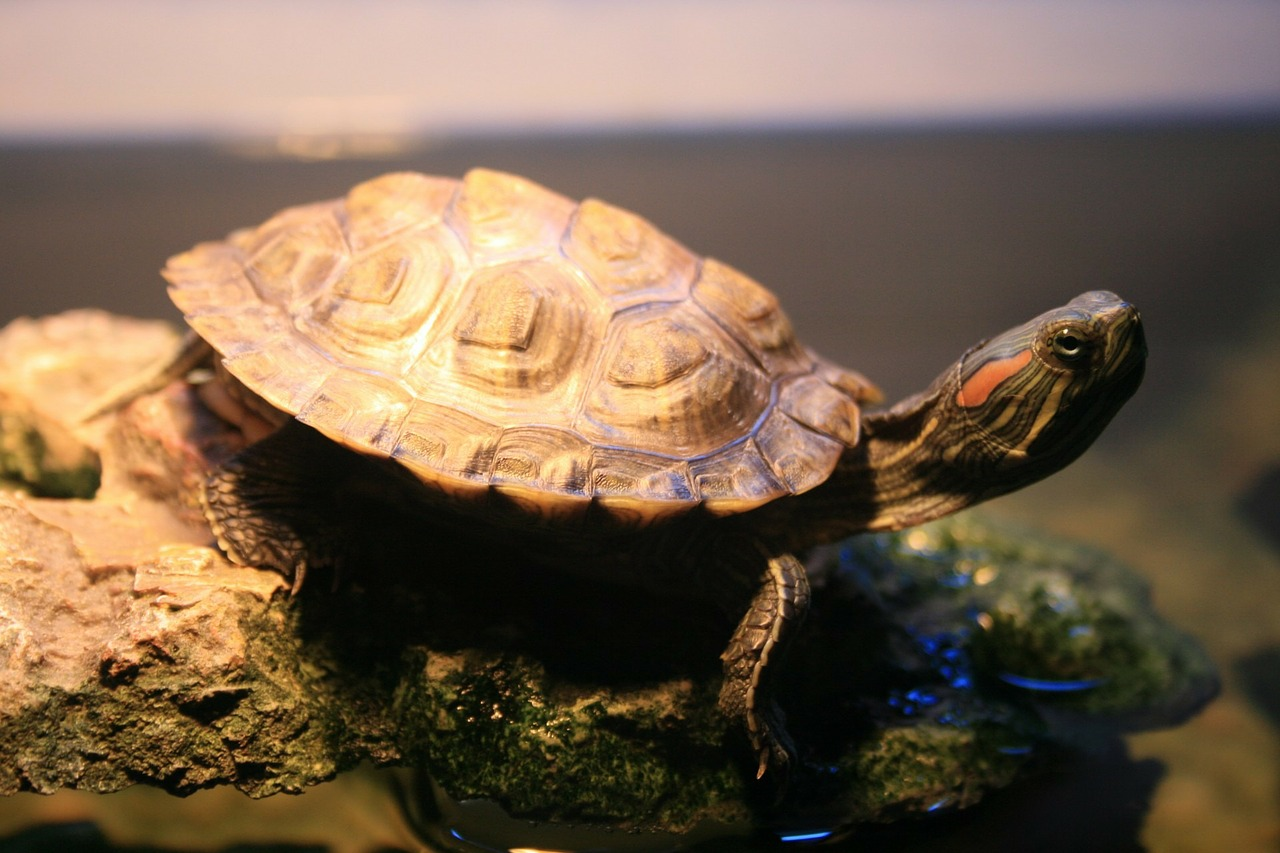
Watching a turtle eat can be really fun. In fact, in can be downright adorable, as we showed in this video of a baby turtle posted to our Facebook page recently.
But aquatic turtles, like red-eared sliders, can’t feast on fruit the size of their bodies all the time. To be a responsible turtle owner, you need to know what makes a balanced diet for your aquatic turtles.
You feed me; I love you
Feeding time can be enjoyable for aquatic turtle owners because many turtles will swim to you for their food. It’s nice to feel appreciated, right? Of course, they’re actually just begging, but good luck training a turtle to ignore a meal. It’s also important to note that although turtles can become used to your presence and eagerly approach you, it does not mean you should handle them often. They’re still not for cuddling.
What to feed
Most aquatic turtles are omnivores and enjoy eating a variety of fruits, vegetables, and small creatures. Also, they need that variety in order to be healthy. But before we get into specifically which foods are okay and how often to feed them, we need to talk about turtle pellets.
Unfortunately, it is nearly impossible to completely replicate the diet and nutrition that your pet turtle would receive in the wild. Because of that, nutritionally balanced turtle pellets are an essential part of their diet. Feeding pellets alongside other foods ensures that your turtle is getting all the vitamins and minerals it needs to stay healthy.
Protein
When selecting protein foods for aquatic turtles, think about the kinds of protein sources they would have access to in their natural habitats, such as lakes and streams. Minnows, crickets, and a variety of worms are perfect-sized proteins. You can also feed other insects, small fish, and aquatic snails. Turtles prefer live food if possible, and many will only eat in the water, where they feel safe.
Vegetables
Vegetables should make up the majority of your turtle’s diet. Most leafy greens are excellent food choices. We suggest kale, collard greens, spinach, parsley, broccoli and romaine lettuce. Feeding greens provides your turtle with necessary calcium. You can also give aquatic turtles other vegetables and non-sugary fruits, like squash, carrots, and bell peppers.
Fruit
Fruit can be safely given to your pet, and it’s a good way to provide additional nutrients. But fruits are not a primary part of a turtle’s natural diet. They don’t need all the sugar from fruit. Give small pieces as treats, and don’t feed citrus fruit to turtles. Apples, bananas, strawberries, and melons are good choices.
Young turtles require higher levels of protein that adults. This means that you should select a higher protein pellet for juveniles, and you should also feed more high protein foods. As your turtle reaches maturity, you will feed it more vegetables and fruits but still feed some protein foods. For more information about what foods are safe for your aquatic turtle, talk to our team at The Tye-Dyed Iguana.
